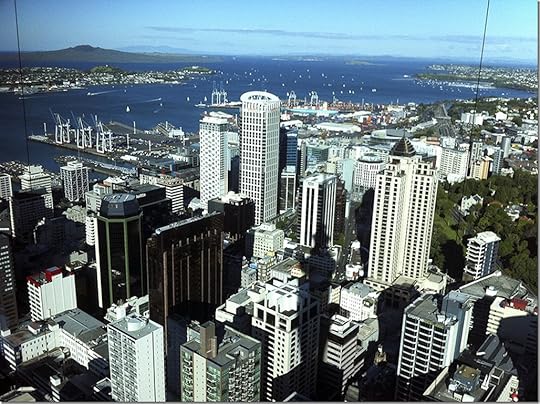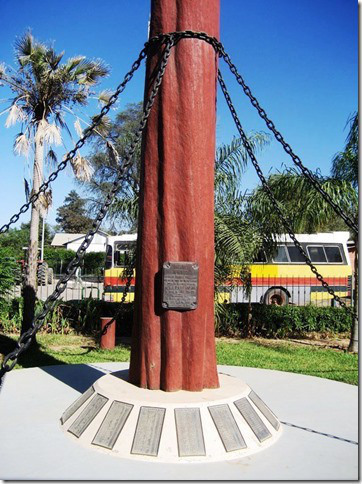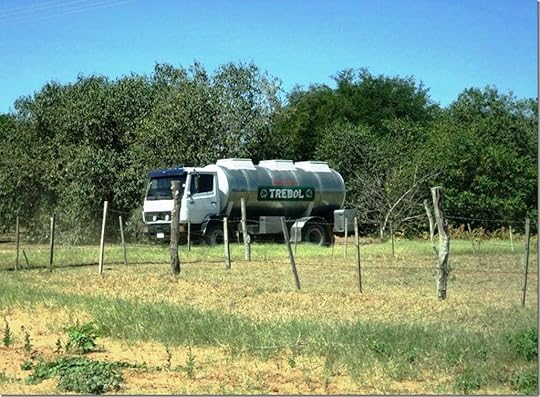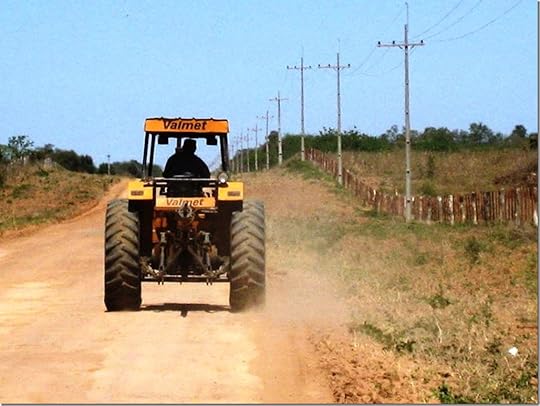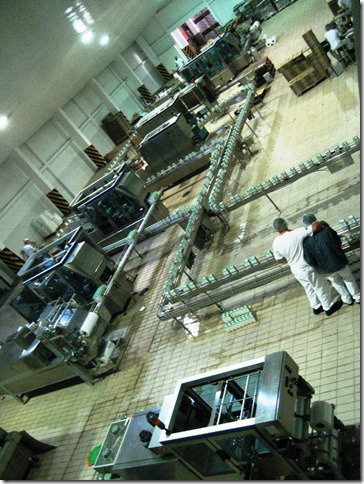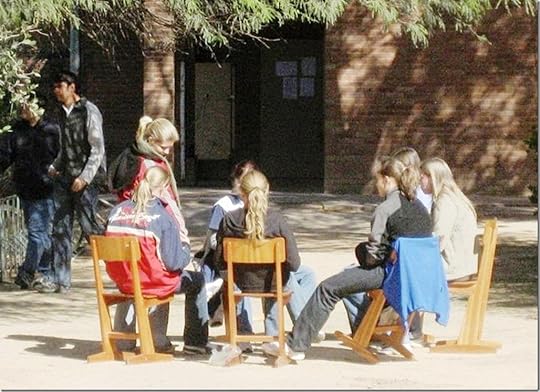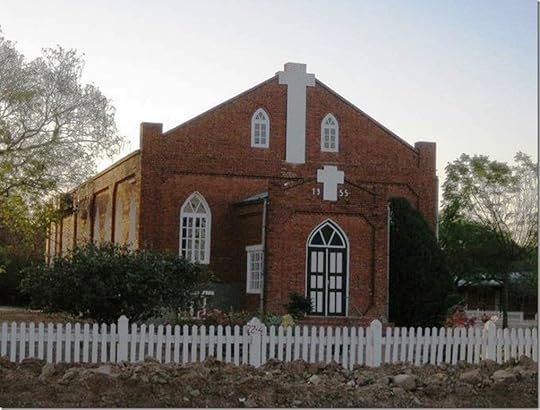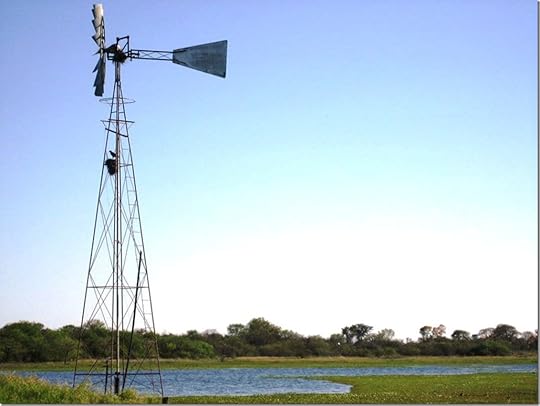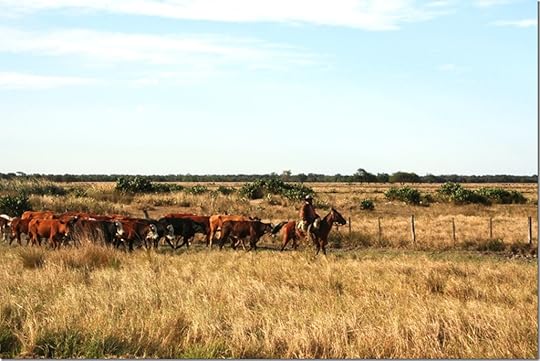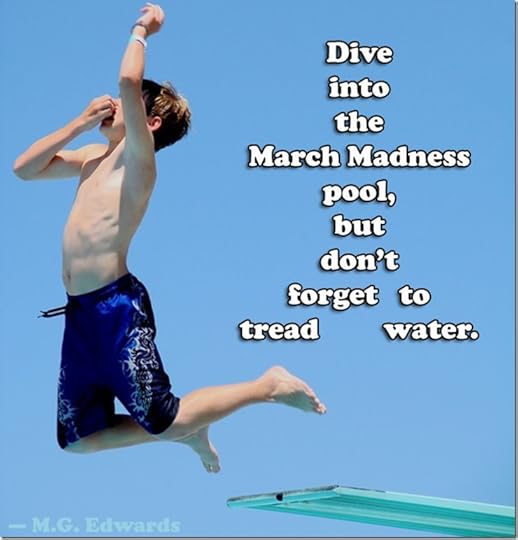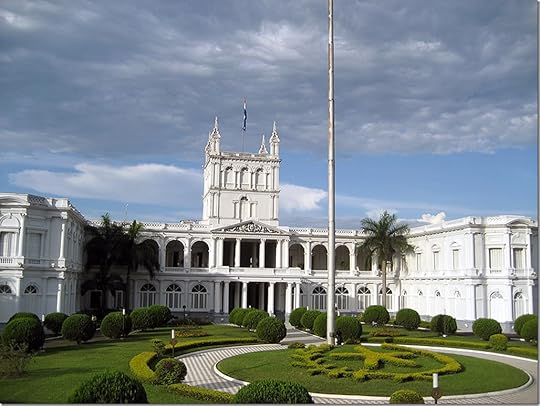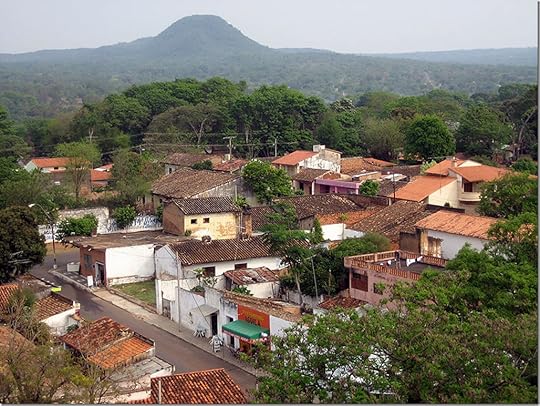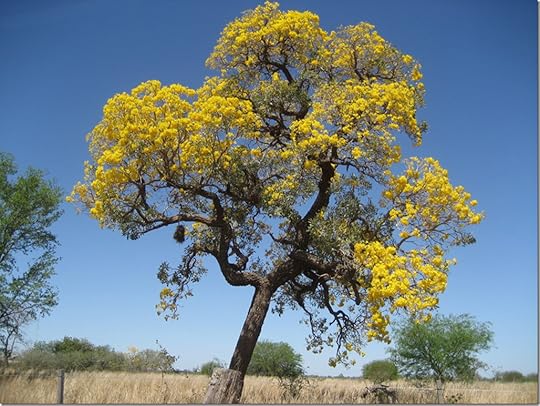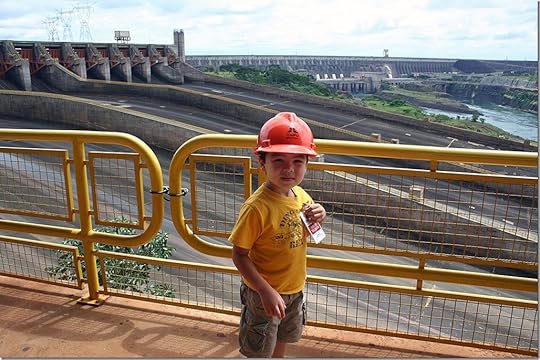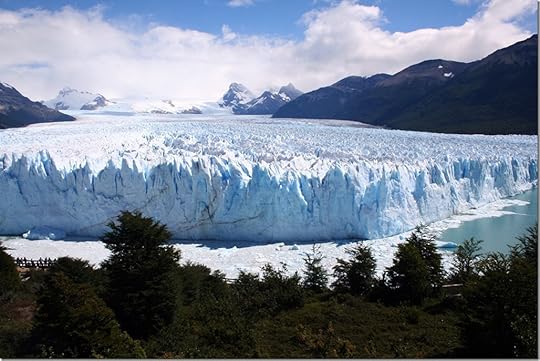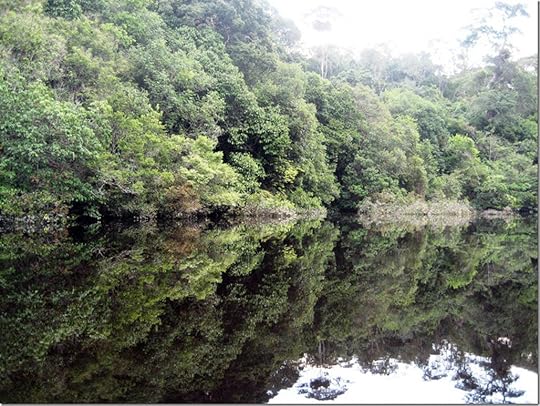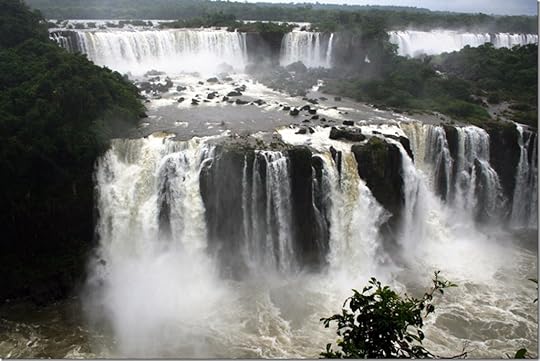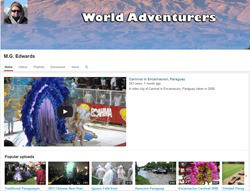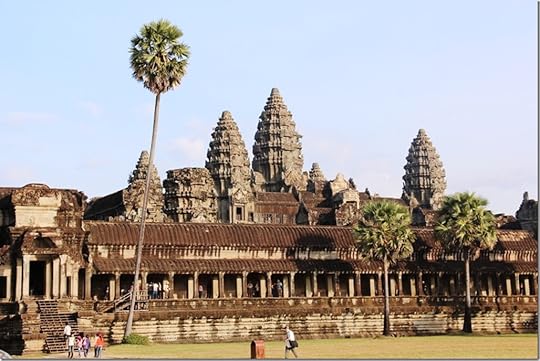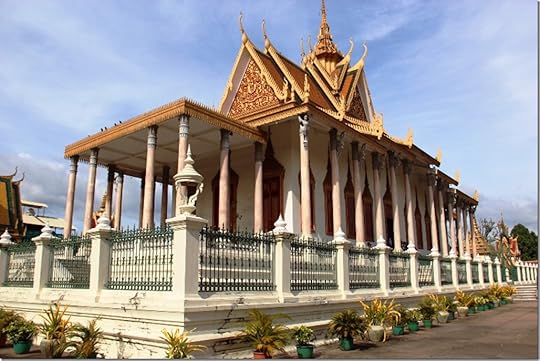M.G. Edwards's Blog, page 3
April 21, 2014
Auckland, New Zealand
My family and I started our journey through New Zealand in its largest city, Auckland. We wondered if we should pass it by after landing at the airport to save time for other attractions on the North and South Island until I reminded myself, “You’re not going to stop in New Zealand’s biggest city? Why in the world wouldn’t you?”
That was enough for me. We added another day to our itinerary with an overnight stop in Auckland and made due with a few hours of touring after our plane touched down at noon. The more I learned about the Northland Region from Auckland to the North Cape on New Zealand’s northwestern peninsula, the more I wanted to stay longer and explore the area. But it wasn’t meant to be. Our almost three-week driving itinerary was already crowded with daily stops from Auckland to Christchurch and everywhere in between. The Northland would have to wait for another trip, and Auckland, unfortunately, was relegated to a brief stop. The city merited more than half a day to take in the sights, but we were hard pressed to expand our schedule or steal time from another location.
Click Here to read the full article posted on my website. Visit MG Edwards for travelogues, photos and videos from around the world.
Filed under: New Zealand, Oceania Tagged: Aoraki, Aoraki Mt Cook, Aotearoa, Auckland, Auckland bridge climb, Auckland bungee, Auckland bungy, Auckland Harbour Bridge, Auckland Mt Eden, Auckland One Tree Hill, Auckland quality of life, Auckland Sky Tower, Auckland two ports, Britain New Zealand, Christchurch, Devonport, Down Under, Hauraki Gulf, Hobbiton, Kiwi, Kiwis, Lorde, Lorde New Zealand, Maori, Maori language, Maori New Zealand, Mercer ranking Auckland, Mt Eden, New Zealand, New Zealand islands, New Zealand photos, New Zealand tourism, New Zealand travel, New Zealand travelogues, New Zealand videos, New Zealander, North Cape, North Island, Northland Region, northwest New Zealand, One Tree Hill, Pancake Rocks, Punakaiki, Rangitoto, Rotorua, Rotorua geyser, Sky Tower, South Island, Tasman Sea, Te Ika-a-Māui, Te Waipounamu, Waitemata Harbour, Wellington








April 17, 2014
The Mennonites of Paraguay (with Photos)
Click here to read the original article on MG Edwards. Visit MG Edwards for more great travelogues, photos, and videos from around the world.
This is the full version of the original article.The third in a series on Paraguay’s Chaco region features the local Mennonite communities. The first focused on Filadelfia , the area’s largest town, and the second on the rural Chaco . The final post highlighted the local indigenous community. Enjoy photos and stories from one of Paraguay’s most intriguing places.
Paraguay’s remote western region, the Chaco, boasts a diverse mix of Mennonite, Spanish, Brazilian, and indigenous Guarani influences. The approximately 60,000 to 80,000 Mennonites in Paraguay who live in large communities, or “colonies,” dominate the local culture. Its distinctly German flavor was introduced to the country by Russian Mennonites of Germanic descent who emigrated from the former Soviet Union in the late 1920s and early 1930s to avoid persecution under Stalinism. Other Mennonite communities migrated to Paraguay between 1929 and 1932 from Canada, Germany, and the United States. The Fernheim, Menno, and Neuland colonies settled near present-day Filadelfia in 1930, and have since grown to more than 10,000 members. Most are farmers with large ranches (estancias) that produce a variety of agricultural products, including beef, dairy products, and other foodstuffs.
The Mennonites’ arrival in the Chaco coincided with the rise in tensions between Paraguay and its neighbor, Bolivia. Eager to solidify the country’s hold on the sparsely populated region, the Paraguayan government granted in the 1930s large parcels of Chaco land to the Mennonites on the condition that they establish a permanent presence there. The Bolivians, who coveted the Chaco for oil-producing potential that never materialized, invaded it in 1932 and fought the three-year Chaco War with Paraguay. More than 80,000 Bolivians and 50,000 Paraguayans died in the conflict that ended with Bolivia’s defeat. Although the pacifist Mennonites did not fight, the food they cultivated kept the Paraguayan troops fed.
The Mennonites struggled to survive in the 1930s and 1940s. An inhospitable, semiarid environment with little rainfall and poor soil made life difficult for the early settlers as they domesticated the land. Travel overland to Paraguay’s capital, Asunción, before the construction of the Trans-Chaco Highway in the late 1950s, was an odyssey that left the remote colonies isolated from the outside world. Indigenous groups such as the Guarani resisted encroachment by their new neighbors and fought occasional skirmishes with the settlers. The Mennonites and the indigenous learned to co-exist peacefully, and many indigenous now work for the colonies. After years of toil, the Mennonites transformed the area into one of the country’s most productive agricultural regions.
The Mennonite’s cooperatives (cooperativas) are among Paraguay’s largest enterprises. Closely affiliated with the local Mennonite Church, they manage the colonies’ commercial interests. Their operations and logistics networks are brilliantly efficient. They provide farmers with enriched animal feed, transport raw milk from farms to dairy plants, transform milk into dairy products, process foodstuffs, and ship finished goods to market on gravel roads that they maintain. The cooperatives also operate service businesses, including hotels, restaurants, gas stations, hospitals, clinics, pharmacies, and shopping centers that cater to the Mennonite communities. Fernheim Colony’s cooperative, the country’s best known, also runs an experimental farm that incubates and crossbreeds cash crops capable of the surviving in the Chaco. The power and influence of the cooperatives is astounding, although one would not know it at first glance. The low-profile associations are opaque operations whose sole purpose is to serve the Mennonites.
The Mennonite culture emphasizes hard work, a simple life, and strict adherence to its religious beliefs. Unlike their Amish cousins, Mennonites embrace the use of technology when it improves their productivity, and they dress in plain, functional clothing. Most men wear short-sleeve cotton shirts and khaki pants or jeans; women usually wear dresses to church and pants on the farm. Most marry within the community, while those who marry non-Mennonites tend to leave the colony. As a result, offspring tend to look Germanic than Hispanic, indigenous, or mixed. It is common to see someone with blond hair and blue eyes walking around Filadelfia. Mennonites also prefer to speak Plattdeutsch, an old variant of Low German, to Spanish or Guaraní, Paraguay’s official languages. It’s easy for those who visit the Chaco to see the cultural divide between the Mennonites and non-Mennonites. While many indigenous and Brasiguayos, or Brazilian migrants living in Paraguay, work with the Mennonites on the estancias, they tend to live separately. Mennonites and other groups seem to frequent restaurants, stores, and services that caters to one or the other. Mennonite activities tend to focus on the church, while non-Mennonites enjoy pastimes such as soccer (fútbol) and public gatherings such as barbeques (asados). This tendency is reinforced more by tradition and preference than overt discrimination.
A visit to the Chaco is worth the opportunity to catch a glimpse of the Mennonite culture set against a backdrop of the “Wild West” of South America. It’s a remarkable journey back in time to a simpler age.
Special thanks to Juliette Wade for hosting the original post on her blog, TalkToYoUniverse as part of the Writers’ International Cultural Share. I’m grateful to have had the opportunity to participate in this great forum where writers can share their cultural experiences and insights from around the world.
Filed under: Paraguay, South America Tagged: amwriting, armadillos, asados, assurance associations, Asunción, Avenida Hindenburg, Bangkok, Bolivia, Boquerón, borracho, borracho tree, bottle tree, Brasiguayo, cattle ranch, ceiba insignis, Cerro Leon, Chaco, Chaco borehole, Chaco employers, Chaco landscape, Chaco photos, chaco rally, Chaco region, Chaco War, Chaco water, Chaco well, child and forced labor, child labor, Climate Change, CODEHUPY, Colonia Neuland, contaminated water, Cooperativas, Cooperatives, Coordinator of Human Rights in Paraguay, Defensores del Chaco, donor funding, drought cycles, estancia, Estigarribia, Exnet, experimental farm, farmland, fútbol, fútbol paraguayo, Federico Franco, Fernando Lugo, Fernheim Colony, Filadelfia, Filadelfia photos, forced labor, Fortin Boqueron, Fortin Toledo, gaucho, German Cuisine, Germanic, Germanic Influence, Gran Chaco, Guaraní language, Guarani, Guarani culture, Guarani ethnic group, human rights agendas, humanitarian assistance, humanitarian assistance Paraguay, IACHR, ILAB, ILO, ILO-APEC, Indigenous, indigenous communities, indigenous culture, indigenous health care, Indigenous People, indigenous services, indigenous workers, Indigenous-Mennonite Cooperation Services Association, Inter-American Commission on Human Rights, Inter-American Court of Human Rights, International Labor Organization, Isla Po’I, Itaipu Dam, jacaranda, Jakob Unger Museum, labor issues, lack of fresh water, lapachos, livestock, Low German, Mariscal José Félix Estigarribia, Maskoy, Melodia Cultural Center, Menno Colony, Mennonite, Mennonite cooperatives, Mennonite culture, Mennonite school, Mennonites, Neuland Colony, NGO, non-governmental organizations, non-indigenous laborers, open cesspools, Paraguay, Paraguay Chaco, Paraguay child labor, Paraguay cowboy, Paraguay culture, Paraguay dairy, Paraguay forced labor, Paraguay Germans, Paraguay government, Paraguay history, Paraguay indigenous, Paraguay money, Paraguay soccer, Paraguay travel, Paraguay wildlife, Parque Nacional del Defensores del Chaco, Plattdeutsch, Pozo Colorado, Project for the People of Paraguay, ranch, rheas, Russian Mennonites, salt lagoons, Santa Cruz, Sawhoyamaxa Exnet, Sawhoyamaxa v Paraguay, severe drought, South America, South American cattle ranch, South American peccary, Soviet Union, Spanish influence, Stalinism, tagua boar, tereré, Tierra Viva, toba-maskoy, Trans-Chaco Highway, Trans-Chaco Rally, Travel, Travel Photos, U.S. Department of Labor, water storage, water tank, Wild West of South America, wildlife, worst forms of child labor, Yakaré Sur, Yakye Axa, Yakye Axa v Paraguay, yerba mate








April 10, 2014
Thoughts & Sayings (April 2014)
Here are some thoughts and sayings I posted on Twitter and/or Facebook in February and March. To my knowledge, I made these up (for better or for worse). Sit back, relax, and enjoy the write!
Click here to read the original article on MG Edwards. Visit MG Edwards for more great travelogues, photos, and video from around the world.
Encouraging Words
1. You only live once. Use it wisely.
2. One’s misunderstanding is another’s failure to communicate.
Twisted Words
3. I’m the real deal. You can have me at a discount.
4. A broken record gets tired of being played over and over.
In Its Own Write
5. I’m always inspired to write when someone else is doing it.
Holidays & Events
6. Dive into the March Madness pool, but don’t forget to tread water.
7. Can I borrow some green? I’m in a pinch.
8. Merchandising in the air.
Random Musings
9. I dream of things that I never knew were on my mind.
Click here to visit the Thoughts & Sayings page, or click here to read the previous batch of Thoughts & Sayings.
Filed under: Humor, Thoughts & Sayings Tagged: amwriting, Basketball, basketball humor, being played, being used, big sale, borrow green, borrow money, broken record, caution, college basketball, communication, consumerism, disagreement, discount, Dreams, dreams on my mind, Encouraging Words, Events, Facebook, failure to communicate, February, February sayings, holiday sayings, Holidays, Holidays and Events, Humor, in a pinch, In Its Own Write, inspirational humor, Irish humor, irony, jokes, Life, live it up, March, March Madness, March Madness pool, March sayings, memes, merchandising, miscommunication, Month, monthly sayings, music humor, NCAA,







April 6, 2014
Straight from the Headlines
 Real Funny News (RFN) and the “Straight from the Headlines” feature launched in 2005 as an April Fool’s Day joke. RFN is a fictional news network that publishes fake “Straight from the Headline” news reports. It puts its own thought-provoking twist on current events from around the world in order to elicit laughter. Articles appear once a year on an auspicious day when readers might be fooled into believing that they’re actual news stories. With its own take on the news, RFN fits right in with the mainstream media.
Real Funny News (RFN) and the “Straight from the Headlines” feature launched in 2005 as an April Fool’s Day joke. RFN is a fictional news network that publishes fake “Straight from the Headline” news reports. It puts its own thought-provoking twist on current events from around the world in order to elicit laughter. Articles appear once a year on an auspicious day when readers might be fooled into believing that they’re actual news stories. With its own take on the news, RFN fits right in with the mainstream media.
Visit RFN for all the latest news and information affecting your world.
2014 Edition
2013 Edition
2006 Edition
2005 Edition
Disclaimer: These articles are works of satirical fiction. Although they may reference real names and places, any resemblance to the truth is coincidental. References to actual public figures are fictitious.
Click here to read the original article on MG Edwards. Visit MG Edwards for more great travelogues, photos, and video from around the world.
Filed under: April Fool's Day, Headlines Tagged: April Fool's Day, April Fool's joke, April Fools, comedy, Humor, political comedy, politics, RFN, satire








April 1, 2014
Straight from the Headlines: Sakhalin and Kurils Secede from Russia
Yuzhno-Sakhalinsk, Russia (RFN) – The Russian Far East islands of the Kurils and Sakhalin voted to secede from Russia and rejoin Japan.
An overwhelming majority in the Russian Far East federal subject of Sakhalin Oblast, better known as the Kurils and Sakhalin, voted today in a controversial election to leave the Russian Federation and rejoin Japan. Exit polls indicated that 99 percent of voters favored secession from Russia and annexation by Japan, which had governed the islands from 1807 until the end of World War II. The referendum called “hasty” and “illegitimate” by critics was held ten days after former Sakhalin Oblast governor Alexander Khoroshavin and his top aides fled to Moscow following a period of political unrest in the islands’ capital, Yuzhno-Sakhalinsk.
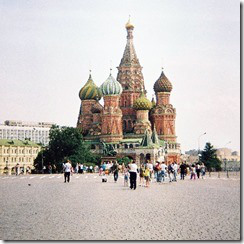 The Sakhalin Oblast government led by interim governor Shigeru Kayano defended the vote as free and fair. “The will of the people is to rejoin the Motherland, Japan. The Russians are constantly trying to drive us into a corner because we have an independent position, because we maintain it, and because we tell it like it is and don’t engage in hypocrisy. But there is a limit to everything. Russia has crossed the line, playing the bear and acting irresponsibly and unprofessionally.”
The Sakhalin Oblast government led by interim governor Shigeru Kayano defended the vote as free and fair. “The will of the people is to rejoin the Motherland, Japan. The Russians are constantly trying to drive us into a corner because we have an independent position, because we maintain it, and because we tell it like it is and don’t engage in hypocrisy. But there is a limit to everything. Russia has crossed the line, playing the bear and acting irresponsibly and unprofessionally.”
Russian President Vladimir Putin and critics called the referendum a “sham” and a violation of international law. Election monitors banned from Sakhalin indicated that a large number of foreign workers in the local oil and gas industry were seen at polling stations. Some observers accused the interim Sakhalin government of preventing Russian voters from going to the polls and refusing to give voters the option to remain a part of the Russian Federation instead of independence or annexation by Japan.
Japanese Prime Minister Shinzo Abe denied his country’s involvement in Sakhalin’s move to return to Japan. The Japanese Diet is expected to approve the annexation, and Abe is scheduled to deliver a speech to the parliamentary body on the matter.
Putin decried the movement of ships in the U.S. Pacific Fleet off the coast of Sakhalin as a “dangerous escalation” to enforce the handover. U.S. President Barack Obama denied the claim and stated that the American fleet had been coincidentally carrying out pre-planned military drills in the Sea of Okhotsk. Putin warned that the moves could draw sanctions or a stronger response from Russia.
Before the March 21 disappearance of Khoroshavin and his $2 million Horch 855 Spezial Roadster, the Sakhalin Oblast government had been under pressure from foreign workers and indigenous minorities to ease up on “anti-non-Russian” political restrictions. After thousands of Ainu, Oroks and Nivkhs and foreign workers in the Sakhalin oil and gas industry took to the streets of Yuzhno-Sakhalinsk in early March, violence erupted when pro-Russian forces tried unsuccessfully to dislodge the protesters occupying Lenin Square. Interim governor Kayano chided the Russian government for what he called “heavy-handed tactics” and stated that “Russia pressed the spring too hard, and it snapped back.”

ACLU Seeks an End to April Fool’s Day
Los Angeles (RFN) – The American Civil Liberties Union (ACLU), citing possible civil rights violations on April Fool’s Day, set up a hotline to help end the practice of perpetrating practical jokes on unsuspecting fools the first day in April. The ACLU asks those who are potential victims of April Fool’s Day pranks to contact the April Fool’s hotline at their earliest convenience. The ACLU will prepare cases for eligible claims in an effort to combat this offensive practice. If you believe you have wrongly duped by an April Fool’s Day joke or prank and seek redress, contact the ACLU at 968-3665 (YOU-FOOL).
RFN – We report.
You deal with it.
Click here to read the original article on MG Edwards. Visit MG Edwards for more great travelogues, photos, and video from around the world.
Filed under: Uncategorized Tagged: Ainu, Alexander Khoroshavin, annexation by Japan, annexation by Russia, April Fool's Day, April Fool's joke, April Fools, Barack Obama, Crimea, Crimea election, Crimea independence, Crimea sanctions, Crimea secession, European Union, Federal Subject, Federal Subject Sakhalin, Horch 855 Spezial Roadster, Humor, Japan, Japan Kurils, Japan Sakhalin, Japanese Diet, joke, Kurils, Moscow, NATO Crimea, news, News & Politics, Nivkhs, Oroks, politics, President Obama, press spring too hard, return to the Motherland, Russia, Russia Kurils, Russia Sakhalin, Russia sanctions, Russian exceptionalism, Russian expansionism, Russian Far East, Russian Federation, Sakhalin, Sakhalin energy, Sakhalin gas, Sakhalin I, Sakhalin II, Sakhalin indigenous, Sakhalin Lenin Square, Sakhalin minorities, Sakhalin Oblast, Sakhalin oil, Sea of Okhotsk, Shigeru Kayano, Shinzo Abe, straight from the headlines, U.S. Pacific Fleet, Ukraine, United States, Vladimir Putin, Yuzhno-Sakhalinsk








March 30, 2014
Paraguay
Click here to read the original article on MG Edwards. Visit MG Edwards for more great travelogues, photos, and video from around the world.
“An island surrounded on all sides by land” is how Paraguayan author Augusto Roa Bastos described his homeland. A small, landlocked country in the heart of South America, Paraguay has had a rich and tumultuous history since its independence in 1811. The country lost half its territory during the 1865-70 War of the Triple Alliance against Argentina, Brazil and Uruguay. However, it won back part of its dry, western half, the Chaco, when U.S. President Rutherford B. Hayes mediated a dispute over the territory and ruled against Argentina in 1878. Paraguay also held on to a large swath of the Gran Chaco by turning back Bolivia in the 1932-35 Chaco War. Known for long periods of isolation under presidents Dr. José Gaspar Rodríguez de Francia y Velasco (1814-40) and Alfredo Stroessner (1954-89), Paraguay earned a reclusive reputation. In recent decades, however, the country has emerged from a half century of dictatorial rule and become more open to visitors. Hindered by a nascent tourist industry and dearth of obvious must-see attractions, Paraguay is easy to overlook. A visit can be rewarding to those who venture off the beaten path to enjoy its beauty, rich mixed indigenous Guaraní and Hispanic heritage, and warm reception from some of the most wonderful people you’ll meet in South America.
More About Paraguay
Carnival in Encarnación, Paraguay (Video)
The Paraguayan Chaco
The Mennonites of Paraguay
Indigenous of the Paraguayan Chaco
Filadelfia, Paraguay
Paraguayan Dancing
Ten Reasons to Visit Paraguay (A Satire)

Filed under: Paraguay, South America Tagged: amwriting, armadillos, assurance associations, Asunción, Avenida Hindenburg, Bangkok, Bolivia, Boquerón, borracho, borracho tree, bottle tree, Brasiguayo, cattle ranch, ceiba insignis, Cerro Leon, Chaco, Chaco borehole, Chaco employers, Chaco landscape, Chaco photos, chaco rally, Chaco region, Chaco War, Chaco water, Chaco well, child and forced labor, child labor, Climate Change, CODEHUPY, Colonia Neuland, contaminated water, Cooperativas, Cooperatives, Coordinator of Human Rights in Paraguay, Defensores del Chaco, donor funding, drought cycles, estancia, Estigarribia, Exnet, experimental farm, farmland, fútbol paraguayo, Federico Franco, Fernando Lugo, Fernheim Colony, Filadelfia, Filadelfia photos, forced labor, Fortin Boqueron, Fortin Toledo, gaucho, German Cuisine, Germanic, Germanic Influence, Gran Chaco, Guaraní language, Guarani, Guarani culture, Guarani ethnic group, human rights agendas, humanitarian assistance, humanitarian assistance Paraguay, IACHR, ILAB, ILO, ILO-APEC, Indigenous, indigenous communities, indigenous culture, indigenous health care, Indigenous People, indigenous services, indigenous workers, Indigenous-Mennonite Cooperation Services Association, Inter-American Commission on Human Rights, Inter-American Court of Human Rights, International Labor Organization, Isla Po’I, Itaipu Dam, jacaranda, Jakob Unger Museum, labor issues, lack of fresh water, lapachos, livestock, Low German, Mariscal José Félix Estigarribia, Maskoy, Melodia Cultural Center, Menno Colony, Mennonite, Mennonite cooperatives, Mennonite culture, Mennonite school, Mennonites, Neuland Colony, NGO, non-governmental organizations, non-indigenous laborers, open cesspools, Paraguay, Paraguay Chaco, Paraguay child labor, Paraguay cowboy, Paraguay culture, Paraguay dairy, Paraguay forced labor, Paraguay Germans, Paraguay government, Paraguay history, Paraguay indigenous, Paraguay money, Paraguay soccer, Paraguay travel, Paraguay wildlife, Parque Nacional del Defensores del Chaco, Plattdeutsch, Pozo Colorado, Project for the People of Paraguay, ranch, rheas, Russian Mennonites, salt lagoons, Santa Cruz, Sawhoyamaxa Exnet, Sawhoyamaxa v Paraguay, severe drought, South America, South American cattle ranch, South American peccary, Soviet Union, Spanish influence, Stalinism, tagua boar, tereré, Tierra Viva, toba-maskoy, Trans-Chaco Highway, Trans-Chaco Rally, Travel, Travel Photos, U.S. Department of Labor, water storage, water tank, Wild West of South America, wildlife, worst forms of child labor, Yakaré Sur, Yakye Axa, Yakye Axa v Paraguay, yerba mate








March 27, 2014
Perito Moreno Glacier, Argentina (Video)
Click here to read the original article on MG Edwards . Visit MG Edwards for more great travelogues, photos, and video from around the world.
Perito Moreno Glacier in Los Glacieres National Park, Argentina is one of the most stunning ice flows in the world. It is one of 48 glaciers fed by the Southern Patagonian Ice Field covering a large portion of the Andes Mountains between Argentina and Chile in South America. Located in the Patagonia region and Santa Cruz Province near the Chilean border, Perito Moreno is popular with tourists because of its incredible, in-your-face ice falls and ruptures that happen just a few hundred meters away, yet oh-so-close. It’s one of the few road-and wheelchair- accessible glaciers, making it easy for tourists to visit on a day trip from the nearby town of El Calafate. Because of its sheer size and pristine white and blue ice fed by one of the world’s few growing ice fields, the massive flow offers sweeping panoramic views unlike any other glacier on earth.
This video clip taken in 2009 features stunning footage of Perito Moreno and pieces of ice calving, or breaking off, from the glacier in spectacular fashion. There are also voice overs and a scene with my young son that you might enjoy. The warm, sunny day was ideal to view the glacier and watch the ice calving unfold.
Perito Moreno Glacier, Argentina
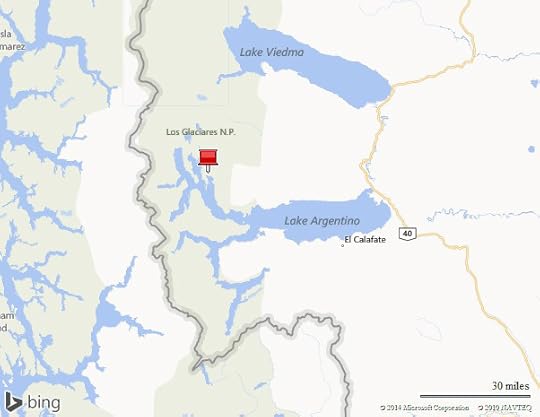
Click here to read the original article on MG Edwards . Visit MG Edwards for more great travelogues, photos, and video from around the world.
Filed under: Argentina, South America Tagged: Andes, Andes glacier, Andes Mountains, Argentina, Chile, Climate Change, El Calafate, Environment, glacier, Global Warming, ice break, ice calving, Icefield, Lake Argentino, Los Glacieres, Patagonia, Perito Moreno, Santa Cruz Province, Travel, travel video, YouTube, YouTube channel








March 25, 2014
Brazil
South America’s largest country defies easy description. From the Andes Mountains to the Atlantic Ocean and the Amazon River Basin to the steppes of the Mato Grasso and beyond, Brazil encompasses a staggering 43 percent of South America’s land mass. In addition to being the world’s fifth largest country by size, it is also one of the continent’s most diverse lands. Brazil is a cultural amalgamation of indigenous roots and western influences. The former Portuguese colony has developed a unique culture shaped by native tribes and thousands of immigrants from Germany, Italy, Japan, Korea, and elsewhere. One of the world’s most important emerging markets with a dynamic, growing economy, Brazil has taken center stage in the sporting world as host of the 2014 World Cup and 2016 Summer Olympics. A short visit will only give you a taste of what this amazing place has to offer and leave you thirsting for more of its unique vibe.
More About Brazil
Manaus, Brazil – Heart of the Amazon
Piranhas!
The Amazon River
An Eco-Resort in the Amazon
Amazon Monkey Reserve
Meeting of the Waters in the Amazon
Amazon Nature Walk
The Amazon Indigenous
Iguazu Falls vs. Victoria Falls
Cross-posted from MGEdwards.com. Visit MGEdwards for more great travelogues, photos, and video from around the world.
Filed under: Brazil, South America Tagged: Amazon, Amazon berries, Amazon boat cruise, Amazon caiman, Amazon danger, Amazon dangerous plants, Amazon Eco-Park, Amazon eco-tourism, Amazon Ecopark, Amazon Ecopark Jungle Lodge, Amazon ferry, Amazon flammable plants, Amazon hallucinogenic plants, Amazon indigenous, Amazon indigenous village, Amazon jungle, Amazon jungle photos, Amazon lizard, Amazon macaw, Amazon medicinal plants, Amazon Meeting of the Waters, Amazon monkey reserve, Amazon monkey sanctuary, Amazon moonlight cruise, Amazon natural art, Amazon nature walk, Amazon nature walk photos, Amazon night cruise, Amazon nighttime animal spotting, Amazon parasitic trees, Amazon parrot, Amazon photos, Amazon plants, Amazon poisonous plants, Amazon rainforest, Amazon rainforest photos, Amazon region, Amazon River, Amazon river basin, Amazon River cove, Amazon River photos, Amazon River tourist excusions, Amazon rubber, Amazon swamp, Amazon swing, Amazon Tarzan, Amazon telegraph tree, Amazon tourist villa, Amazon trees, Amazon tropical juice, Amazon village, Amazon walk, Amazon wildlife, Amazonas, animal conservation, arboreal monkeys, Ayres black uakari, Baniwa, Baniwa culture, Baniwa photos, Baniwa tribe, black-headed uakari, Blue Nile, Brazil, Brazil indigenous, Brazil Instituto Socioambiental, Brazil monkeys, Brazilian Amazon, Brazilian culture, brown woolly monkey, caiman, caipirinha, caipirinha in the Amazon, Colombia, Colombia indigenous, Colombia monkeys, Colombian woolly monkey, common woolly monkey, easy access to Amazon jungle, eco-resorts, ecology, ecoresort, ecotourism, Ecuador monkeys, endangered animals, endangered monkeys, endangered primates, Environment, Gilligan’s Island, good Amazon resort, Heart of the Amazon, human rights abuses, Iguazu Falls, incense tree, indigenous abuses, indigenous and rainforest, indigenous human rights, indigenous photos, indigenous rights, jungle swamp, leisure at a jungle resort, leisure in the rainforest, macaw, making rubber, Manaus, margaritas, margaritas in the jungle, Meeting of the Waters, Meeting of Waters, monkey photos, monkey preserve, monkey rehabilitation, monkey reserve, monkey sanctuary, monkey species, mosquitoes on Rio Negro, native Amazon fish, Neblina uakari, needlefish, orphaned monkeys, parasitic plants, parasitic trees, parrot, Peru monkeys, pet piranhas, piraña, piranha, piranhas, playing chess in the jungle, playing pool in the jungle, rainforest chess, rainforest pool, resort close to Manaus, resort near Manaus, Rio de Janeiro, Rio Negro, Rio Solimões, Rio Tarumã, river convergence, rubber making process, rubber tree photos, silvery woolly monkeys, South America, stranded in the jungle, Tarumã River, tourist excursions Manaus, Travel, Travelogue, travelogue with photos, tropical rainforest, uakari monkeys, Venezuela indigenous, Venezuela monkeys, White Nile, why Rio Negro has no mosquitoes, wild monkey photos, woolly monkeys, world's largest rainforest








March 18, 2014
Videos
World Adventurers YouTube Channel
Here are some of the more popular travel videos:
Traditional Paraguayan Dance
Traditional Paraguayan Dance
A dance in Paraguarí, Paraguay. The mixture of traditional dresses, music dominated by the harp and guitar, and songs in Guarani, an indigenous language, are mesmerizing.
Iguazu Falls
Iguazu Falls from Argentina and Brazil
Three different views of one of the world’s largest and most spectacular waterfalls located on the border between Argentina and Brazil.
2012 Chinese New Year
2012 Chinese New Year
Fireworks in Shanghai, China at midnight in January 2012, to celebrate the Chinese New Year, the Year of the Dragon.
Click here to subscribe to the World Adventurers YouTube Channel
Cross-posted from MGEdwards.com. Visit MGEdwards for more great travelogues, photos, and video from around the world.
Filed under: Video Tagged: Google+, MG Edwards, MGEdwards, online channel, Travel, travel clips, travel video, Video Channel, World Adventurers, world travel, YouTube, YouTube channel








March 16, 2014
Cambodia
Cambodia is a land of contrasts. From the majesty of the former Khmer Empire showcased by the legendary city of Angkor to the country’s recent history under the Khmer Rouge still echoing in the Killing Fields, Cambodia is a mixture of triumph and tragedy. The country has emerged from the dark shadows of the past and is rapidly developing into a modern, vibrant society that stands side by side with magnificent edifices and artifacts. Few visitors to Cambodia leave without being somehow touched by the warmth of the Cambodian people, its rich culture and history, and stories laced with sobering realities. Its diverse land stretches from pristine beaches and wetlands along the Gulf of Thailand to the rolling Cardamom and Annamite mountains. Nestled in between is one of Southeast Asia’s largest wildernesses. Those looking for a fun, fascinating and unforgettable journey should spend time in Cambodia.
More About Cambodia
Top Ten Things to Do on Holiday in Cambodia
Heading to the Coast (National Highway 4)
Driving the Coast (National Highway 48)

Cross-posted from MGEdwards. Visit MGEdwards for more great travelogues, photos, and video from around the world.
Filed under: Asia, Cambodia Tagged: Angkor, Angkor archeological site, Angkor archeology, Angkor complex, Angkor Reclining Buddha, Angkor Ruluos, Angkor Ta Prohm, Angkor Thom, Angkor Wat, Asia, Bakong, Bangkok, Baphuon, Baphuon preservation, Bayon, Bayon bas relief, best Angkor temples, best of Cambodia, Botum Sakor National Park, Buddhist Temple, Cambodia, Cambodia adventure, Cambodia best photos, Cambodia Coast, Cambodia genocide, Cambodia national parks, Cambodia photos, Cambodia Royal Palace, Cambodia Silver Pagoda, Cambodia Thailand border, Cambodia Thailand border dispute, Cambodia things to do, Cambodia top ten, Cambodia top ten photos, Cambodia travel, Cambodia travelogue, Cambodia tuk tuk, Cambodia wilderness, Cambodia-Japan Friendship, Cambodian coast, Cambodian frontier, Cardamom Mountains, CGI, CGI animation, Cheong Ek Memorial, computer-generated imagery, cool Cambodia temple, Dangrek Mountains, Dead Kennedys, Dead Kennedys Holiday in Cambodia, driving Cambodian coast, Gulf of Thailand, Hindu temple, holiday in Cambodia, Khmer Empire, Khmer Rouge, Khmer Rouge genocide, Khmer Rouge Phnom Penh, Khmer Rouge Tuol Sleng, Killing Fields, Killing Fields Chinese cemetery, Killing Fields mass graves, Killing Fields orchard, Killing Fields stupa, Killing Fields tower, Koh Ker, Koh Kong, Koh Kong City, Koh Kong Province, Kompong Phluk Stilt Village, Krong Koh Kong, Monivong Boulevard, Phnom Penh, Preah Ko, Preah Vihear, Preah Vihear border dispute, Ruluos, Security Prison 21, Siem Reap, Siem Reap Night Market, Sihanoukville, Silver Pagoda, Southeast Asia wilderness, Ta Prohm, Ta Prohm Buddhist monastery, Ta Prohm preservation, Ta Prohm Tomb Raider, Ta Prohm trees, Terrace of the Leper King, tetrameles nudiflora, Thailand, Tonle Sap Lake, top ten things, top ten things to do in Cambodia, Travel, tuk tuk, Tuol Sleng, Tuol Sleng Genocide Museum, Tuol Sleng S-21, UNESCO, UNESCO World Heritage Site, Wat Phnom Penh









